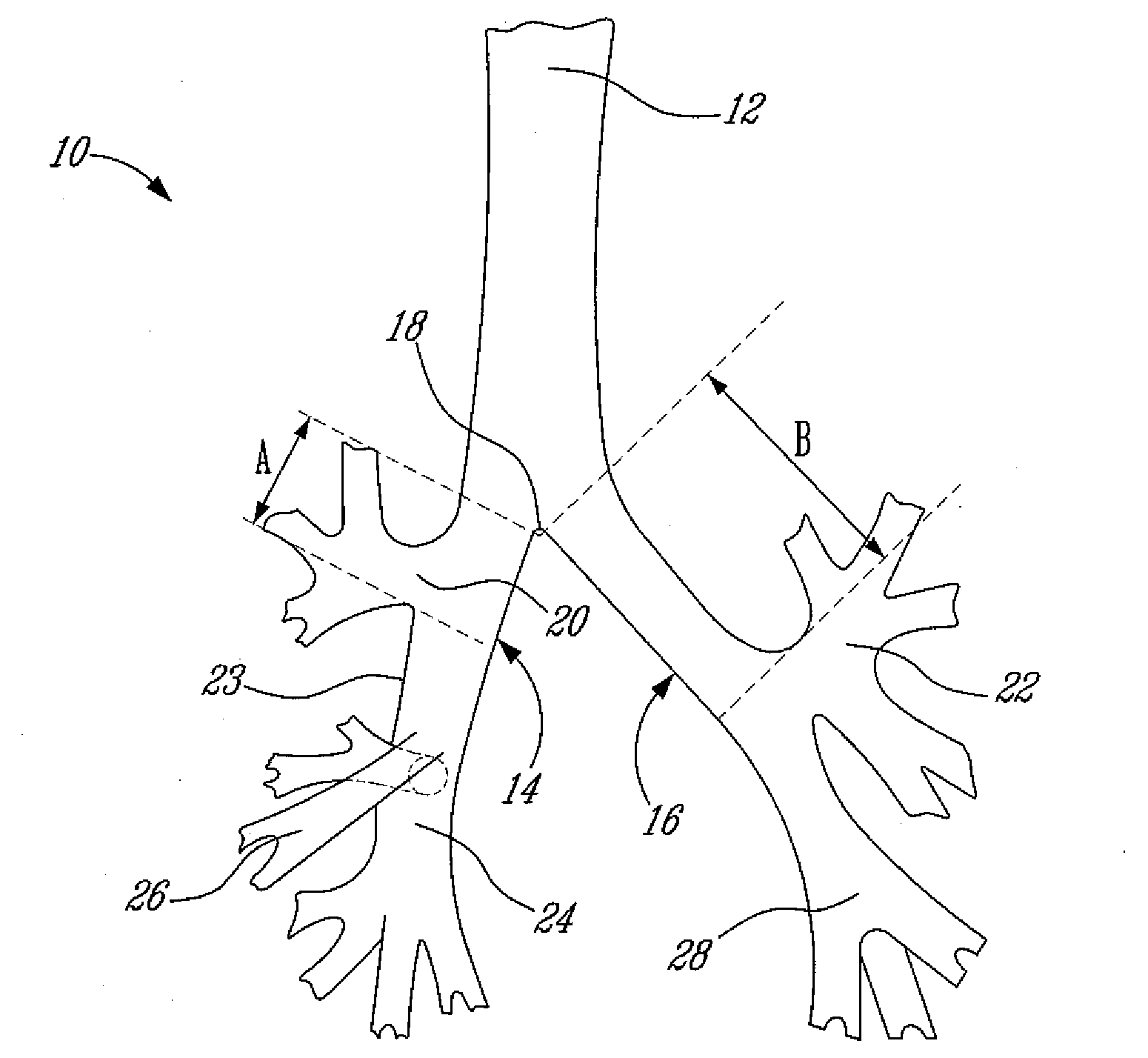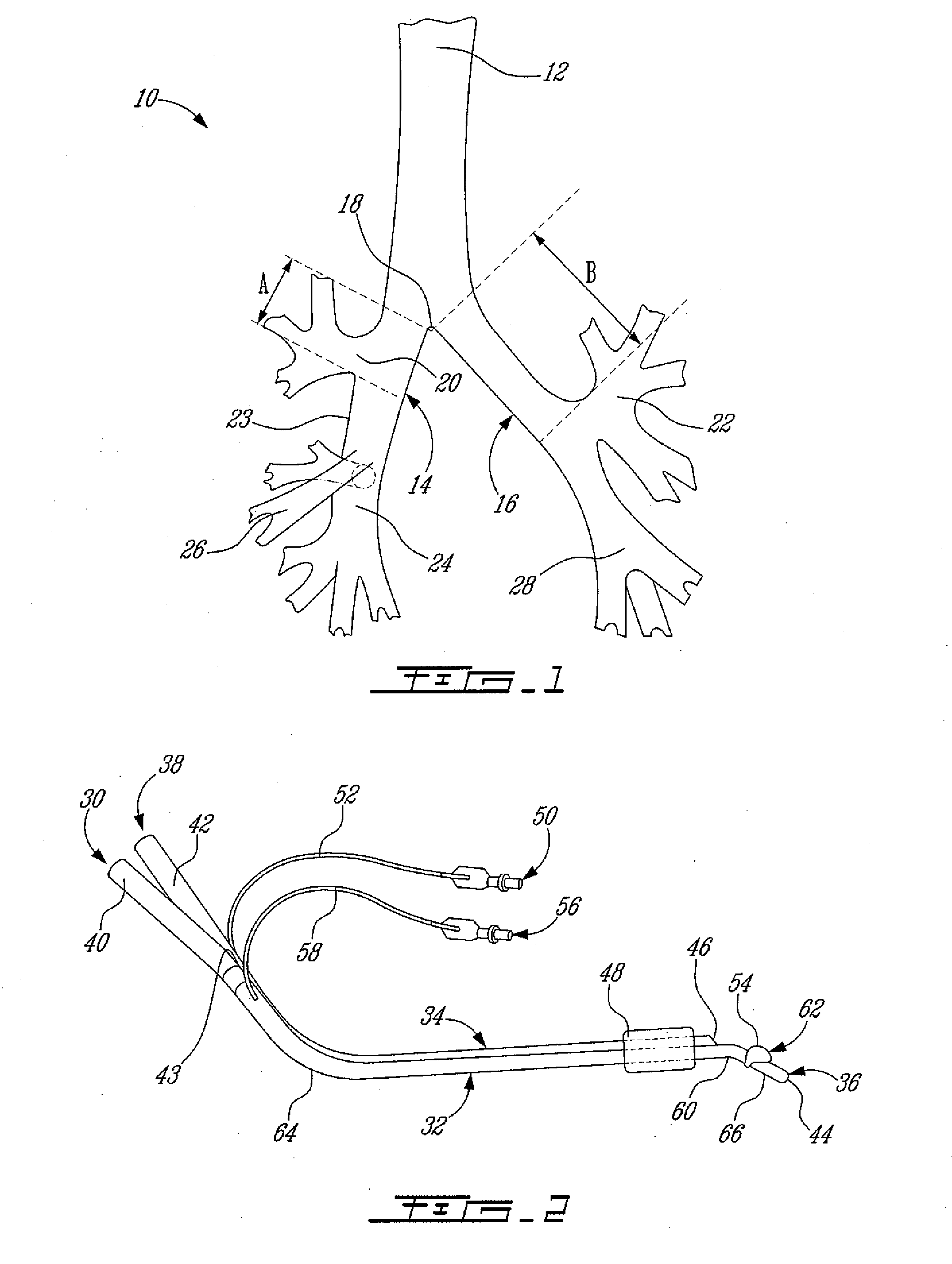Right double lumen endobronchial tube
a technology of endobronchial tube and right lumen, which is applied in the field of right double lumen tube, can solve the problems of anomalous ventilation of the lung, difficulty in properly aligning the lateral orifice of the r-dlt and maintaining alignment, and difficulty in repositioning, so as to promote routine use and facilitate positioning
- Summary
- Abstract
- Description
- Claims
- Application Information
AI Technical Summary
Benefits of technology
Problems solved by technology
Method used
Image
Examples
Embodiment Construction
[0035]FIG. 1 illustrates the anatomy of the tracheobronchial tree represented by reference numeral 10. It can be seen that the tracheobronchial tree 10 comprises a trachea 12 that bifurcates into a right main bronchus 14 and a left main bronchus 16. The right main bronchus 14 branches off the trachea 12 at an approximate angle of 25 degrees and the left main bronchus 16 branches off at an approximate angle of 45 degrees. These are the major air passages from the trachea 12 to the lungs (not shown). Each lung is divided into upper and lower lobes, with the right lung also having a triangular division known as the middle lobe. The right lung is larger and heavier than the left lung, which is somewhat smaller in size because of the position of the heart. The main bronchi 14 and 16 enter each lung respectively and progressively branch off into more than 23 paired subdivisions. At every branching, the number of airways increases greatly. Thus, FIG. 1 illustrates a portion of the entire s...
PUM
 Login to View More
Login to View More Abstract
Description
Claims
Application Information
 Login to View More
Login to View More - R&D
- Intellectual Property
- Life Sciences
- Materials
- Tech Scout
- Unparalleled Data Quality
- Higher Quality Content
- 60% Fewer Hallucinations
Browse by: Latest US Patents, China's latest patents, Technical Efficacy Thesaurus, Application Domain, Technology Topic, Popular Technical Reports.
© 2025 PatSnap. All rights reserved.Legal|Privacy policy|Modern Slavery Act Transparency Statement|Sitemap|About US| Contact US: help@patsnap.com



